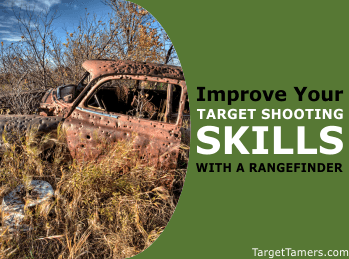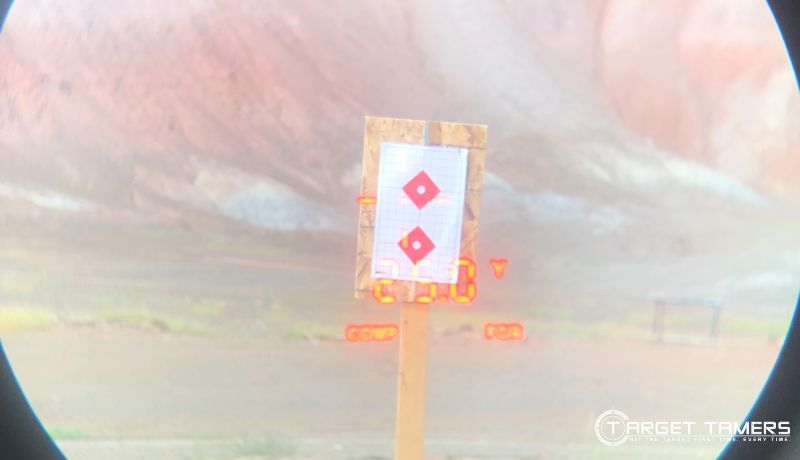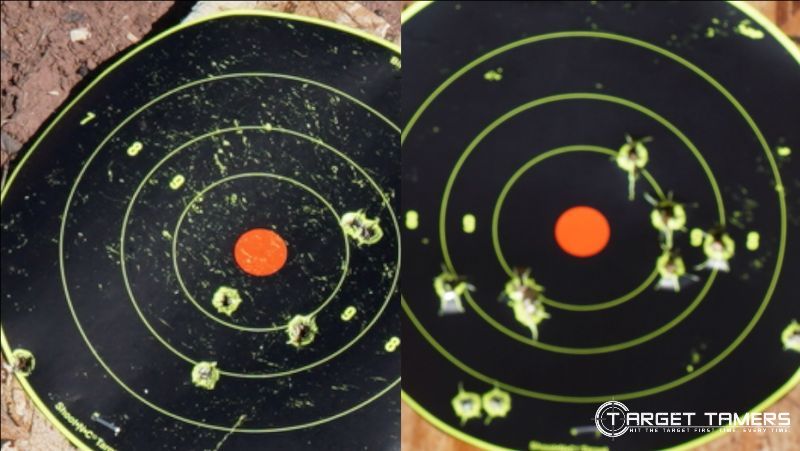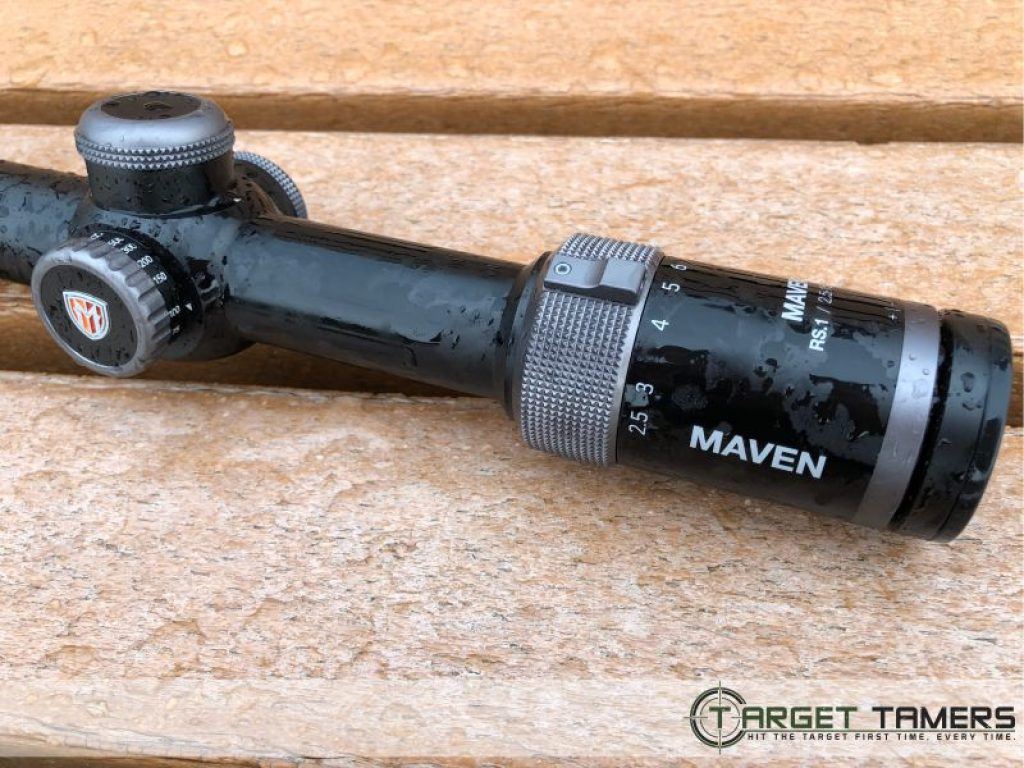
Whether it's a paper target or a clay pigeon, there's always satisfaction in successfully making the shot. Out in the country or at the range, you can become an expert at sighting in your scope and hitting a bullseye every time. But what about throwing a rangefinder into the mix?
If you're wanting to be more than just an amateur shooter, you'll have to give yourself some variety and add challenges to the mix. Take the road of the established target shooter by expanding your environment well past the indoor range and into unpredictable terrain where your rangefinder can be your best friend.
Here, we'll take a bird's eye view into how a rangefinder can improve your target shooting.
What Exactly is Target Shooting?

You could say that target shooting is akin to hunting, except in this article, target shooting will be limited to recreational enjoyment and tactical use. Shooters of all kinds enjoy using a variety of firearms for target practice. The most commonly used firearms are (in order of popularity):
- Rifle
- Handgun
- Shotgun
- Muzzle-loader
Although it's not listed, the bow for the archer is another option that's commonly used for target shooting.
Target shooters like to get in some defensive practice, develop and hone their marksmanship skills, practice for competitions, and play with new optics that can make target shooting that little bit more fun.
The following list displays the most popular target shooting activities participated in, in order of popularity for all the types of firearms used:
- Plinking/Informal
- Sighting-in
- Long-range
- Training/Tactical
With these kinds of activities in mind, now's the time to ask how a rangefinder can help improve your target shooting skills.
» Plinking/Informal

There's almost nothing more American than plinking. Who would've thought that setting up a few beer bottles on a fence post to shoot at would provide so much delight and satisfaction? Using a rangefinder while plinking can not only help you learn estimating distances when you're without one, it can also help you get some quality practice in for hunting and competitions.
For example, while you're out plinking, walk to various distances and range it. When eyeing up that tin can, don't take your eyes off of it while you pull out the rangefinder, put it to your eyes, and shoot.
This type of practice can save you some misplaced shots while out in the field, can help you better learn how to handle a rangefinder, and can make sure you see your target shatter every time you pull the trigger.
Another bonus of using a rangefinder while plinking is it's also an excellent way to help train firearm skills with children and young adults.
» Sighting-In

This is an extremely popular reason as to why many go target shooting - to sight-in scopes for recreational use or to prep for the hunting season. Rangefinders can help tremendously with this. If you're out at the range with known distances, you can always double check it with your rangefinder.
But, for those times you rather wing it in your own backyard, out at your hot spot, or even from the tree stand, you'll either need a super-duper long measuring tape or a rangefinder. You can set up targets, decoys, or use landmarks to range custom distances to sight in. That way when the doe comes strolling into your ranging spread, you're all ready to go.
» Long-Range
Rifles are the firearm of choice for long-range distance shooting. You're typically going to look for a rangefinder that can range distances beyond 600 yards. When you're shooting these types of distances, a rangefinder is a must if you want to hit all your targets. Use your rangefinder to sight-in your scope to get an accurate aim.
You can also get rangefinders with features that can calculate air pressure, bullet-drop, holdover, and angle compensation so that you don't miss the bullseye.
» Training/Tactical
Training and tactical scenarios, especially those of the military and law enforcement kind, can benefit greatly from using rangefinders in the field. Because there is the possibility of life-or-death situations being present while out in the field, it's vital that you know the exact distance of your target.
Rangefinders have various features that can aid in tactical and training scenarios such as custom ballistic information, night-vision, and even binocular capabilities. Laser rangefinder binoculars provide the benefits of two units in one.
What About the Weather?
Using a rangefinder to improve your target shooting skills also means being able to range and aim successfully in various weather conditions. For example. That 100 yard target has never been a problem for you to see and nail with the naked eye on a sunny day.
But, when the clouds are out and it starts pouring, it can seem further away than it actually is. Time to call it a day right? Wrong. Pull out the rangefinder and use the built-in features to make the most of your target shooting session. Some rangefinders have an automatic rain mode.

When it's pouring outside, the laser beams emitted from the unit pulse off and reject the rain or snow. Since the unit can distinguish between rain and the target you're trying to range, you'll know the reading is for your target. When it's raining during your next target shooting competition, you'll have no reason to pout if you've got your rangefinder with you.
Identify Possible Obstructions
Using a rangefinder helps you to get the right distance to make your shot, whether you're out hunting or plinking or using a bow or rifle. Some rangefinders have advanced technology that can help you determine whether or not you're going to actually hit your target.
Sometimes there are obstructions in the travel path of your arrow or bullet that the rangefinder can identify. This can be extremely helpful to archers so they can calculate the right angle they need to make the shot to hit the bullseye and not the limb that's directly in the way.
Know the Distance of Moving Targets
Most conventional rangefinders have a Scan Mode that constantly updates the distance of your moving target. Whether it's a moving paper target or a fleeing criminal in a paintball scenario, the rangefinder can provide constant distance updates to either help you shoot at the right time or to determine the distance of the predicted flight path.
Rangefinders are very helpful tools that can improve your accuracy every time you pull the trigger. Whether it's a bullseye, bird decoy, or a beer can that you're aiming for, a rangefinder can up your game. They're finding their rightful place in this day and age, and it's not just in the front pocket of your coat.
Now you are a target shooting pro, learn how to use your rangefinder in any light!
Further Reading



